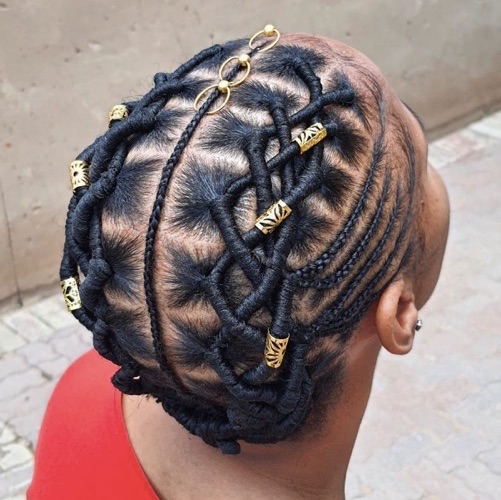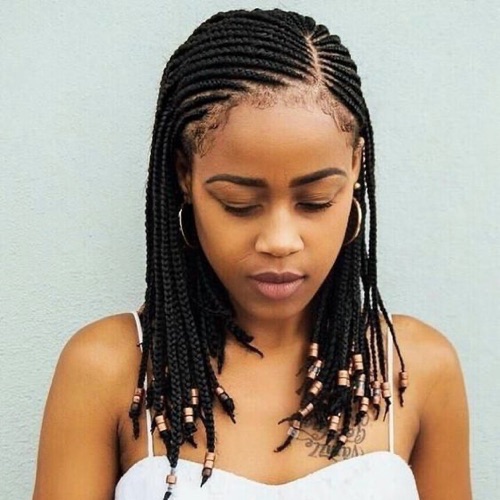The most distinctive item of clothing worn in Zulu traditional attire is the isicholo, or circular-shaped hat, which married women wear.
The Ischolo were originally made of grass and cotton. To protect the women from the sun, they were as big as a metre across. Zulu ladies wear various costumes to indicate their changing circumstances. Explore dresses below👇🏾
Aside from the Ischolo, a married woman wears a thick cowhide skirt that has been softened with animal fat and charcoal to symbolise that she is no longer available for potential suitors.
Young single ladies with short hair and a grass-reed skirt adorned with beads wear it topless. Engaged females cover their breasts and grow their hair.
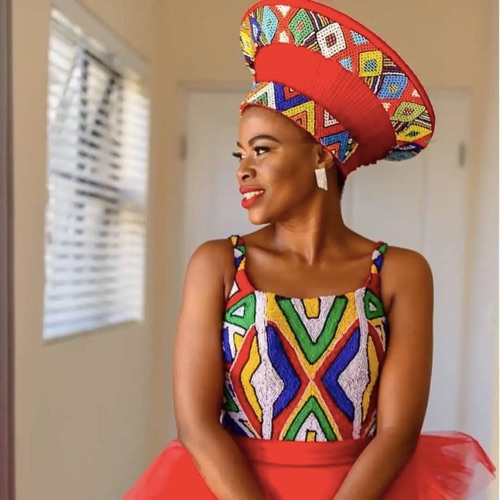
Types of Zulu Traditional Attire
The grass reed skirt has been replaced with the regular Zulu pleated skirts. Historically, Zulu women covered their breasts with a cloth, but today’s simple fabric used to cover their breasts is replaced by cotton vests or beaded bras worn together with bright beaded necklaces.
Classic Dresses
Below you’ll find pictures of an array of modern classy Zulu traditional dresses. Many of which will contain a requisite level of beadwork, an integral part of Zulu traditional attire.
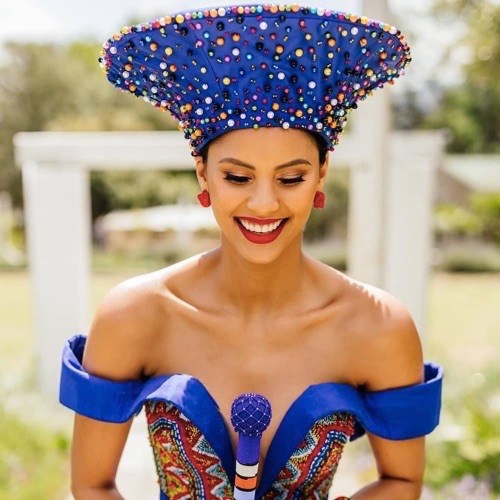
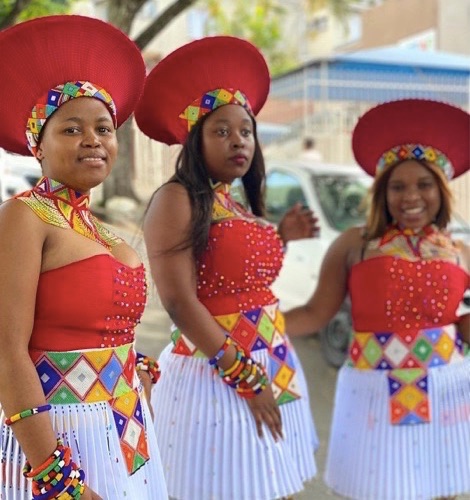

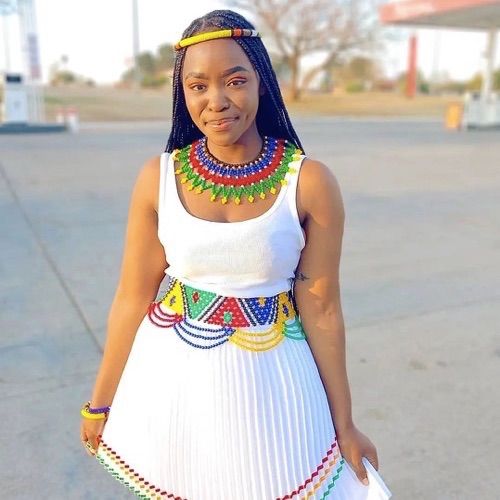
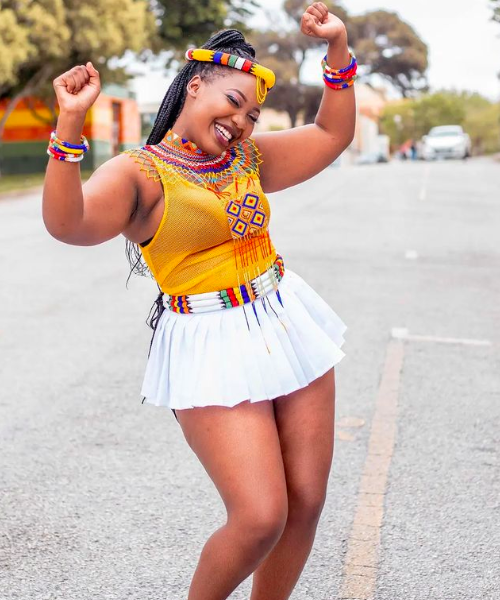
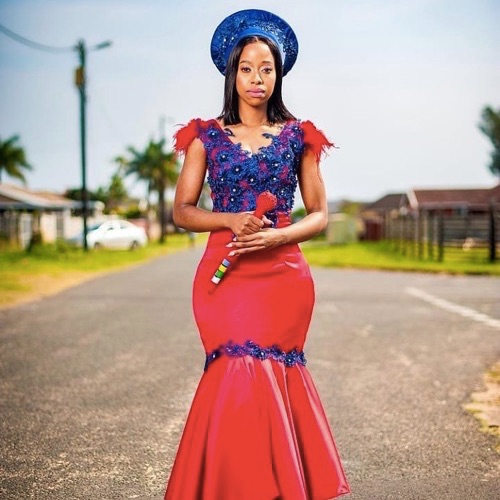
Zulu Traditional Wedding Dresses
Below you’ll find an assortment of beautiful Zulu traditional wedding dresses. These wedding dresses can be worn in a variety of different occasions, from very formal weddings to more nonchalant ceremonies.
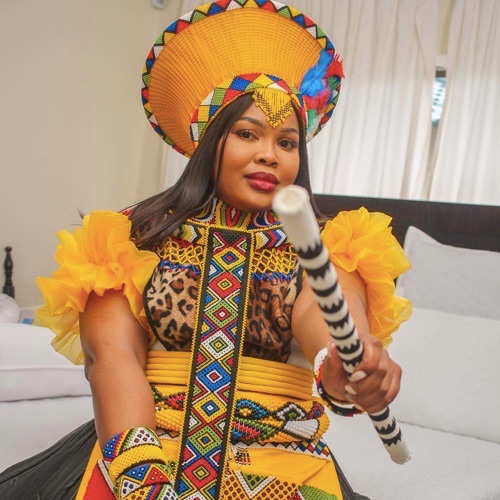
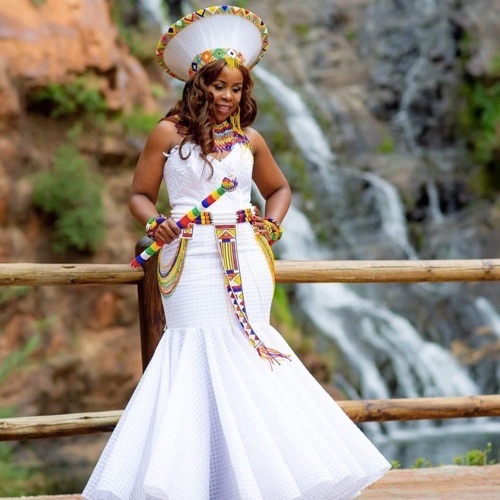
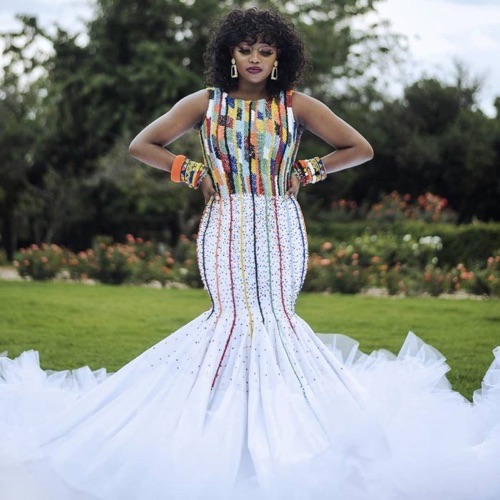
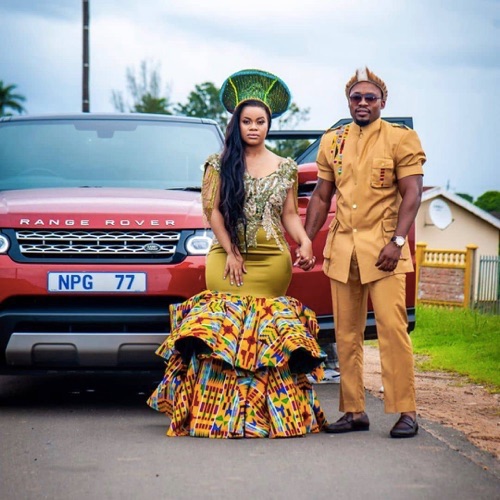
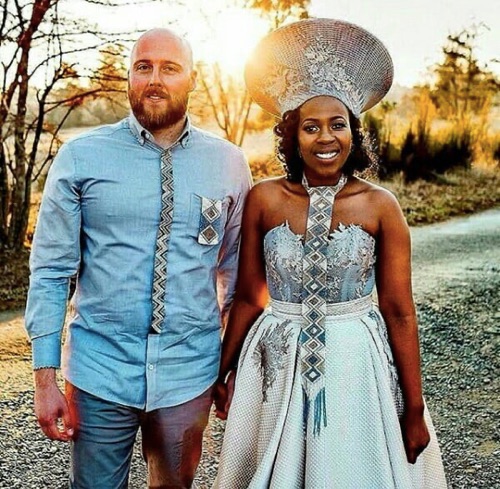
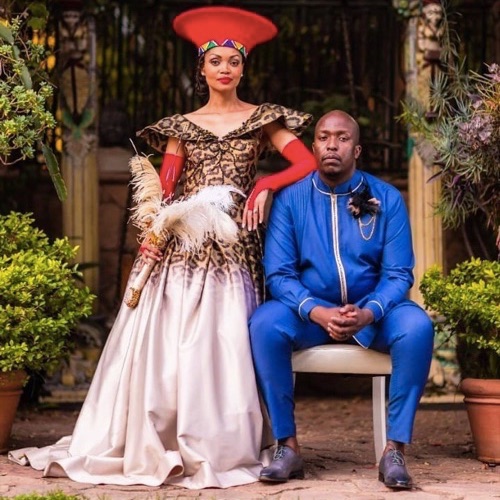
Zulu Ethnography
Let’s explore the Zulu ethnography. This involves taking a deep dive into the people, culture and customs.
Zulu History
The Zulu people are a Nguni ethnic group in Southern Africa. The Zulu people are the most numerous ethnic group and country in South Africa, with an estimated 10-12 million residents concentrated mainly in KwaZulu-Natal province.
They are a Nguni people who took part in the Bantu migrations over the course of millennia. As the clans converged, Shaka’s leadership provided victory to the Zulu nation owing to his improved military tactics and administration.
The Zulus are proud of their customs, such as the Umhlanga, or Reed Dance, and various types of beadwork.
Beadwork is used to express the Zulus’ cultural identity and serves as a kind of communication. In order to function as a whole, the men and women perform different duties in society.
Today, the majority of Zulus adhere to Christianity, but they have developed a syncretic faith that incorporates elements from their prior beliefs.
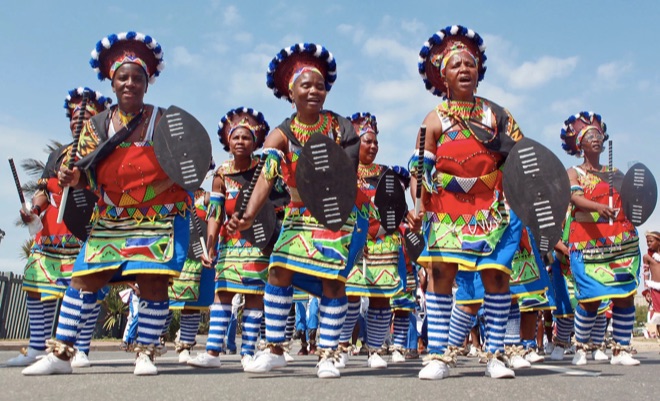
Zulu Language
isiZulu is a Southern Bantu language of the Nguni branch spoken in Southern Africa. It is the primary language of the Zulu people, with over 12 million native speakers, who reside in South Africa’s KwaZulu-Natal.
Zulu is the most widely spoken home language in South Africa, with 24 percent of the population speaking it (it is understood by over 50%). In 1994, it became one of South Africa’s 11 official languages.
Shaka and the Zulu Kingdom
Shaka’s reign and that of his successors were critical in building the Zulu nation’s power and strength. The military was run on a military system known as ukubuthwa, which abandoned most initiations.
According to the system, each age-set, or bunch of young men of the same age, was assigned to the same regiment – ibutho single and amabutho multiple. Ukubuthwa applied to females as well, but they were mostly grouped into ages rather than regiments.
The amabutho were kept in military barracks – ikhanda singular, amakhanda plural – all over the country and under the command of a close relative or someone designated by the king.
The barracks were fashioned and established similarly to an umuzi, but on a much grander scale. Aside from military obligations, the izinsizwa ‘young men’ were also in charge of maintaining their quarters.
Shaka, the Zulu king, founded a powerful empire in 1816. He was commander of the Mthethwa Empire and successor to Dingiswayo, brought what had previously been a confederation of tribes under Zulu domination.
King Shaka developed a military institution known as the Impi, which included conscription, a permanent army, new weapons, regimentation, and encirclement battle methods. Zulu expansion was a key element of the Mfecane (“Crushing”), which despoiled large swaths of southern Africa.
Shaka began his military ascension while leading the Ndwandwe. He divided his army into regiments to combat other groups in the north. Mzilikazi’s regiment, which was under Shaka, rebelled and devised a strategy to continue raiding northern areas, establishing another Zulu dialect known as Northern Ndebele.
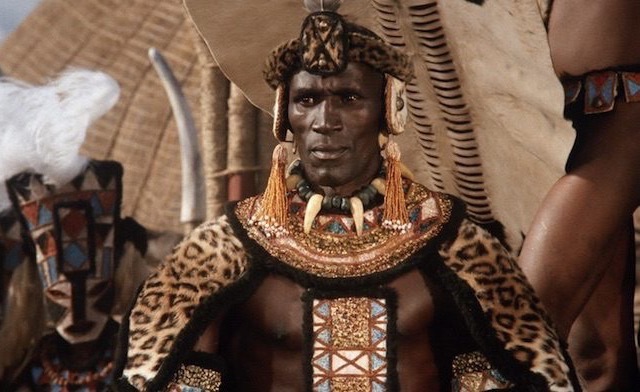
Zulu Beadwork
The Zulu people have employed beadwork for thousands of years. It has formed an integral part of Zulu traditional attire. This form of beadwork was referred to as iziqu, which meant medallions of war. Zulu beads were draped in a criss-cross pattern over the shoulders and worn as a necklace.
The Zulu believed that the beads were carried by the warriors, who gave a nod to those who would perish in battle. These beads, according to the warriors, represented bravery. Wood, seeds, and berries have been used to make beadwork since long before the Zulus arrived on the scene.
It was not until after the Europeans arrived that glass became a commercial commodity, with the Portuguese supplying it in large amounts to the Zulu.
The Zulu people’s method of communication is beading. It is generally a symbol of prosperity to wear numerous beads at the same time. The more beads one has on, the more wealthy they appear to be.
The beads have the ability to reveal a person’s age, gender, and marital status. The appearance of the beads frequently conveys a certain meaning. However, in order to interpret the message properly, one must first understand the situation in which they are being utilized.
The variations in meaning between designs can be large depending on the location of beadwork production. Some designs may have distinct meanings when compared to others. The colors and structure of the beads might contain a message, or they could be used for ornamental purposes only.
Beadwork is worn for everyday use, but it’s often seen at special events like weddings and funerals as part of Zulu traditional attire. Beadwork is used during the coming-of-age ceremony for a young girl or during dance parties, to name a couple of examples.
Zulu Customs
A diviner (sangoma) must appeal to the spirits through divinatory procedures in order for him or her to diagnose the problem. Then, a herbalist (inyanga) creates a mixture (muthi) that is ingested in order to influence the ancestors.
Diviners and herbalists play an important role in the Zulu people’s everyday lives. However, white muthi (umuthi omhlope), which has beneficial effects such as healing or prevention or reversal of bad fortune, is distinguished from black muthi (umuthi omnyama), which can bring sickness or death to others. Society views users of black muthi as witches and ostracises them.
Zulus have a distinct ceremony known as Ukweshwama, which is performed during the end of summer. The sacrifice of the bull is included in Ukweshwama, an annual ritual that recognizes a new harvest. It is a day of worship when Zulu people pray to God and their forefathers.
A new troop of young fighters is required by tradition to face a bull and demonstrate their bravery, taking on the beast’s strength as it expires. It is thought that this energy then passes to the Zulu king..
Zulu Religion
According to the majority of Zulus, Christianity is their religion. The Zion Christian Church, Nazareth Baptist Church, and United African Apostolic Church are some of the most popular churches among them, although membership in prominent European Churches like the Dutch Reformed, Anglican, and Catholic Churches is also prevalent.
Nonetheless, many Zulus continue to practice their pre-Christian religion of ancestor worship in conjunction with their Christianity.
The creator God (uNkulunkulu) of Zulu religion is believed to be above interacting in daily human life, although this concept appears to have originated from early Christian missionaries’ efforts to convert the notion of the Christian God into Zulu terms.
The Zulu people have long believed in ancestor spirits (amaThongo or amaDlozi), who could intervene in individuals’ lives for good or ill. This concept is still prevalent among modern Zulus.
The Zulu recognize three components in every person: the physical body (inyama yomzimba or umzimba), the breath or life force (umoya womphefumulo or umoya), and the “shadow,” reputation, or personality (isithunzi).
Isithunzi may pass into the afterlife as an ancestral spirit (idlozi) if certain conditions were met in life. One’s isithunzi is bolstered by behaving with ubuntu, or showing respect and generosity to others. In contrast, acting in a harmful manner towards others may reduce the isithunzi and cause it to vanish entirely.

